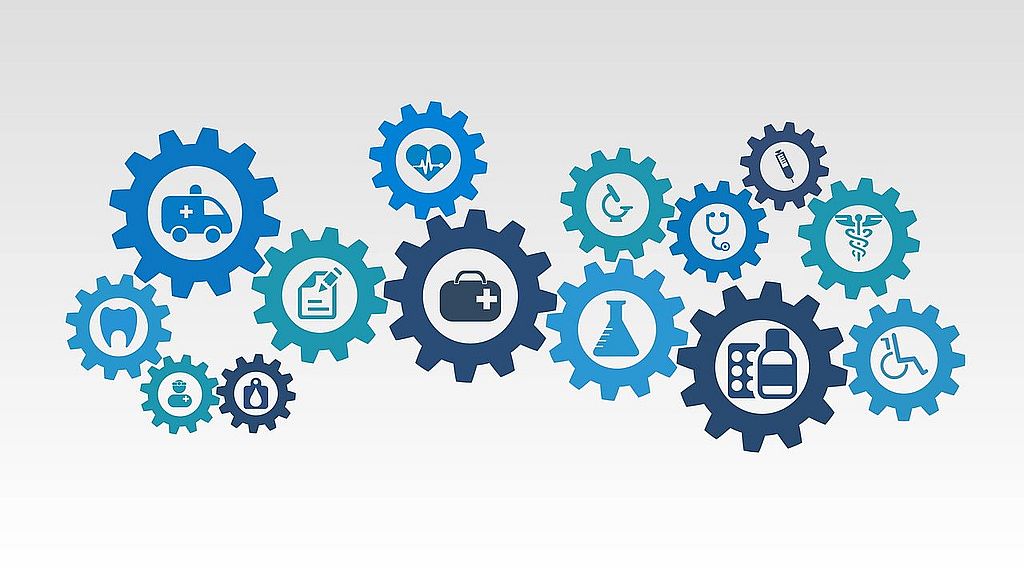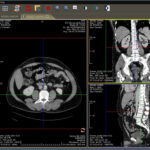Imagine a healthcare realm where big data isn’t just a buzzword but the backbone of proactive patient care. As the digital age surges, the healthcare sector stands at an exciting crossroads.
Recent data suggests that by 2025, the global digital health market will be valued at over $500 billion, reflecting an undeniable shift toward tech-powered healthcare solutions. The powerful duo of Dynamics 365 and big data are central to this transformation.
Journey with us as we delve deep into how these formidable forces are sculpting a future-ready healthcare system, preparing it not just for tomorrow but for decades.
The Current Landscape of Healthcare Technology
As the 21st century unfolded, the marriage of healthcare and technology became both immanent and intrinsic. Digital records replaced vast paper trails, and real-time patient monitoring became the norm rather than the exception.
While advanced, today’s healthcare technology landscape often grapples with siloed systems that lack seamless integration, resulting in operational inefficiencies and, at times, hindered patient care.
Challenges with Outdated Systems
Despite the leaps and bounds in medical technology, several institutions remain tethered to outdated systems. These legacy systems, while familiar, struggle to accommodate the massive influx of data generated daily.
Furthermore, they often lack the robust security measures needed in today’s cyber-vulnerable landscape. These challenges aren’t merely technological but can profoundly impact patient outcomes. Delays in data retrieval or the inability to access crucial patient information in critical moments can spell the difference between swift recovery and complications.
The Imperative Need for Modern Solutions
The healthcare sector’s thirst for more integrated, secure, and efficient systems isn’t just about keeping up with the times. It’s about creating a patient-centric model where every piece of data, from routine check-ups to critical surgeries, is stored, accessed, and analyzed with finesse. Modern problems demand modern solutions.
As patient volumes grow and medical data burgeons, the shift towards sophisticated platforms like Dynamics 365 becomes not a choice but a necessity. This transition paves the way for better patient care, streamlined operations, and the ability to harness the full potential of big data in predictive healthcare.
Dynamics 365 Business Central – A Closer Look
Dynamics 365 Business Central has emerged as a beacon for institutions aiming to synchronize their operations and elevate patient care. At its core, this platform is built to integrate multiple business processes into a unified ecosystem.
From finance and operations to patient relationship management, Dynamics 365 encapsulates all facets, offering a 360-degree view. It’s more than just an ERP system; it’s a solution designed with scalability and adaptability in mind, ensuring that as healthcare evolves, so does its technological backbone.
Tailored Benefits for Healthcare
The real magic of Dynamics 365 lies in its bespoke features for the healthcare sector. It accommodates the intricate workflow processes inherent to hospitals and clinics. Automated reminders for patient appointments, a unified dashboard for patient history, and even AI-driven insights to spot trends or anomalies are part and parcel of this platform.
The integration of AI means that as more patient data gets fed into the system, the smarter and more insightful the platform becomes. It’s a future-proof solution, always learning and always adapting.
Real-World Success Stories
The efficacy of Dynamics 365 Business Central is theoretical and has been proven in real-world scenarios. Consider, for instance, a renowned hospital in the Midwest. After integrating with Dynamics 365, they reported a 30% increase in operational efficiency, significantly reduced waiting times, and enhanced patient satisfaction scores.
Another clinic on the East Coast utilized the platform’s predictive analytics capabilities to forecast patient inflows, allowing them to allocate resources more effectively and reduce overhead costs. These stories aren’t anomalies but testaments to what’s achievable when modern technology meets dedicated healthcare professionals.
Big Data – The Powerhouse of Modern Healthcare
In today’s digital age, data isn’t just numbers on a screen; it’s the lifeblood of decision-making processes. Big Data in healthcare refers to the colossal datasets harvested daily, often too large and complex for traditional data-processing systems.
This vast sea of information captures everything from patient histories and treatment outcomes to genetic sequences and biometric readings. It’s a digital repository of human health at both individual and collective levels.
The Potential Impact on Patient Care
Big Data’s influence on patient care is multifold. With its analytical capabilities, patterns previously hidden in mountains of data are now detectable. It allows healthcare professionals to predict outbreaks, understand disease progression at a macro level, and even customize treatment plans at a micro, individual level.
For instance, consider the field of genomics. By analyzing vast genetic datasets, physicians can now prescribe treatments best suited to an individual’s genetic makeup, heralding the era of personalized medicine.
Operational Efficiency and Cost Management
Beyond patient care, Big Data stands as an invaluable tool for the administrative side of healthcare. It offers insights into operational inefficiency, helping hospitals optimize resource allocation, reduce wastage, and manage costs more effectively.
For example, hospitals can manage staffing needs more efficiently by predicting patient inflow during specific seasons or analyzing peak operational hours, ensuring no resource is under or over utilized.
The Challenges and The Road Ahead
However, as with any revolution, the Big Data movement has challenges. Data privacy concerns, the potential for information silos, and the need for specialized professionals to interpret complex datasets are all valid concerns. But, as history has shown, challenges are stepping stones for innovation.
As we venture further into this era of data-driven healthcare, the symbiotic relationship between Big Data and modern technological solutions like Dynamics 365 will undoubtedly pave the way for a more informed, efficient, and compassionate healthcare landscape.
Synergizing Dynamics 365 with Big Data
The healthcare realm transforms when two technological giants like Dynamics 365 and Big Data converge. Dynamics 365, with its seamless integrative capabilities, serves as the ideal vessel to harness the raw power of Big Data.
By channelling vast amounts of data through a system built for analysis and adaptability, healthcare institutions can craft strategies and make decisions backed by unparalleled insights.
Decision-Making on Steroids
The integration of Big Data into Dynamics 365 supercharges the decision-making process. Instead of sifting through disparate data sources or relying on isolated metrics, professionals now have access to an interconnected web of information.
This comprehensive view allows for faster, more accurate diagnoses, predictive patient care strategies, and the ability to forecast trends and challenges before they become problematic. Imagine identifying potential health outbreaks or predicting patient recovery rates with incredible accuracy—all powered by this synergy.
Personalization at its Peak
One of the most profound impacts of this integration is the advent of hyper-personalized care. With Dynamics 365’s AI capabilities working with Big Data’s vastness, healthcare professionals can precisely tailor treatments and care pathways to individual patients.
No longer does one-size-fits-all; instead, every patient’s unique medical history, genetic makeup, and even lifestyle choices can inform a customized care plan.
Streamlining Behind-the-Scenes Operations
While patient care remains at the forefront, the fusion of Dynamics 365 and Big Data offers a goldmine for administrative optimization. Data-driven insights benefit resource allocation, financial management, and even supply chain logistics.
Hospital administrators can make informed choices, whether it’s regarding staff schedules, procurement of medical supplies, or optimizing patient flow within the facility.
Preparing for the Future: Steps to Upgrade & Integrate
Before diving into the deep end of integration, taking a step back and evaluating your current healthcare IT infrastructure is crucial. What systems are in place? Where does data reside, and how accessible is it?
Organizations can pinpoint gaps, redundancies, or outdated systems by understanding the current landscape. This assessment doesn’t just focus on the technological side and the human factor—identifying who manages the data, the user proficiency levels, and the training required for new tools.
Choosing the Right Dynamics 365 Modules
Dynamics 365 isn’t a monolithic system but a suite of applications tailored to specific business needs. Choosing the right modules for healthcare institutions—whether for patient relationship management, human resources, or finance and operations—is paramount.
Collaborate with a trusted Dynamics 365 consultant or partner, someone well-versed in the healthcare domain, to ensure your choices align with your current needs and future aspirations.
Data Migration and Cleanup
With a clear direction set and Dynamics 365 modules in place, the next step is data migration. This stage involves the mere transfer of data and its cleansing. Big Data’s power lies in its quality.
Duplicate records, outdated information, or conflicting data points can hamper the integration’s success. Use advanced data management tools, and consider hiring data experts, to ensure the integrity and reliability of your migrated data.
Integration and Testing
Once data is settled in its new Dynamics 365 home, it’s time to integrate the platform with other existing systems—electronic health records, imaging systems, or laboratory information systems. Integration ensures seamless data flow across platforms, which is vital for real-time analysis and decision-making.
However, before going live, rigorous testing is essential. Simulate real-world scenarios, assess system responses, and refine any hitches to ensure a smooth operational transition.
Training and Change Management
Upgrading systems isn’t just about technology; it’s equally about the people using it. Organize comprehensive training sessions for different user groups, from medical professionals to administrative staff. Also, adopt a robust change management strategy.
This ensures everyone is on board, understands the new system’s benefits, and can effectively utilize Dynamics 365 and Big Data’s combined capabilities.

The Tangible Benefits: ROI, Efficiency, and Enhanced Patient Care
At first glance, embarking on a transformative journey integrating Dynamics 365 and Big Data is a considerable investment. However, the return on investment (ROI) extends well beyond monetary figures.
Sure, streamlined operations and reduced inefficiencies lead to financial savings. But the real ROI is seen in reduced patient readmissions, optimized resource utilization, and faster, more accurate diagnoses—outcomes that, while quantifiable, resonate far beyond balance sheets.
Operational Efficiency Unleashed
Integrating Dynamics 365 with Big Data is like adding rocket fuel to a car—it supercharges every aspect of the operation. Automated workflows eliminate redundant processes, predictive analytics optimize resource allocation, and real-time data ensures swift decision-making.
This operational overhaul isn’t just about speed but about precision. It’s about ensuring that every move made, every resource allocated, and every decision taken aligns perfectly with the institution’s goals and patient needs.
Patient Care – A Paradigm Shift
In the age of information, patient care transcends mere medical interventions. It’s about providing a holistic, personalized healthcare experience. With Dynamics 365’s AI capabilities harnessing Big Data insights, medical professionals are equipped to deliver predictive, personalized, and proactive care.
Patients aren’t just recipients of medical services but active participants in a healthcare journey tailored for them, from customized treatment plans to predictive health insights.
A Legacy of Continuous Improvement
One of the underrated benefits of this integration is its capacity for continuous improvement. The healthcare landscape is ever-evolving, with new challenges and opportunities emerging daily.
With Dynamics 365 and Big Data at the forefront, healthcare institutions can adapt in real-time. They can refine strategies based on current data, adopt best practices as they emerge, and ensure they remain at the cutting edge of healthcare delivery.
Final Words
For institutions ready to embrace this change, the horizon is filled with promise: streamlined operations, unparalleled patient care, and a tangible return on investment far beyond monetary metrics. It’s not just about adopting new technologies but crafting a narrative of progress, where every data point is a step towards a brighter, healthier future. As we stand on the cusp of this transformation, healthcare institutions have the tools and insights to witness and shape the future of patient care. The journey ahead is promising, and the time to embark is now.











